How to Buy Bitcoin
Introduction
The process of buying Bitcoin can definitely be confusing if you’re new to cryptocurrency.
With this guide, you’ll learn how to buy Bitcoin using some of the most popular Bitcoin buying options and exchanges, store your Bitcoin safely, track your Bitcoin buying, analyze the market, and use your Bitcoin if and when the time comes.
Choose a Bitcoin Wallet
In order to store your Bitcoin, you’ll need what’s known as a Bitcoin “wallet”.
Since Bitcoin is virtual (doesn’t physically exist), a Bitcoin wallet is virtual as well.
There are tons of different Bitcoin wallets that you can choose from.
The main types of Bitcoin wallets include desktop wallets, mobile wallets, web wallets, hardware wallets, and paper wallets.
* When creating any type of Bitcoin wallet, make sure that you make a note of your private key (if the wallet provides one) and any other crucial information, such as passwords and recovery phrases! Most wallets DO NOT offer “Forget your password?” or other similar recovery options. With great power comes great responsibility.
Desktop Wallets
As the name suggests, desktop wallets are software for your desktop or laptop that allow you to store your Bitcoin. Desktop wallets can be a convenient way to store your Bitcoin and are considered safer than mobile and web wallets. However, the desktop wallet is as secure as your desktop – if your desktop is infected with malware, it’s possible that malicious actors can compromise your funds.
Electrum is one of the most popular desktop wallets for Bitcoin because it is easy to use yet offers advanced options for power users.
(For example, instead of selling Bitcoin for dollars or other fiat currencies, you could sell it for cryptocurrencies like Walton).
Mobile Wallets
Mobile wallets are great since you can access your Bitcoin on the go, or whenever you have your phone. However, again, your funds are only as safe as your device. Though you can recover your Bitcoin if you lose your phone using your private key and/or recovery phrase, it’s recommended that you only carry small amounts of Bitcoin on a mobile wallet at any given time.
Breadwallet is a mobile Bitcoin wallet known for its simplicity.
Web Wallets
Web wallets are Bitcoin wallets that allow you to access your Bitcoin from a website. While this can be more convenient than storing your Bitcoin on a desktop, mobile, hardware, or paper wallet, web wallets are probably the least secure type of Bitcoin wallet and should only be used if you don’t have access to another type of wallet or if you are going to make a transaction quickly.
Examples of web wallets include web wallets, such as GreenAddress, which also offers mobile apps and a Chrome extension.
Exchange wallets would also fall under the category of Bitcoin web wallets. For example, users could store their Bitcoin on Coinbase or another exchange. However, with exchanges, you are usually not in control of your private key. If the exchange gets compromised, such as in the case of Mt. Gox, you cannot restore your Bitcoin by entering your private key into another wallet that interfaces with the Bitcoin network.
Hardware Wallets
Hardware wallets are one of the most secure ways to store your Bitcoin (along with paper wallets) and should be considered by those who hold significant amounts of Bitcoin. With a hardware wallet, your private key never leaves the device, making it much more secure than other options.
The Ledger Nano S is a popular Bitcoin hardware wallet.
Paper Wallets
Paper wallets are pieces of paper that have your private key. Paper wallets are considered to be the most secure type of Bitcoin wallet but are more suitable for long-term storage.
Bitaddress is a popular option for creating paper wallets. Save the page as an HTML file to your computer and move that HTML file to an offline computer via USB to generate the paper wallet and print it. Be sure to make copies of the paper wallet and store them in safe locations!
See Bitcoin.org’s list of Bitcoin wallets for more Bitcoin wallets (list not exhaustive). Be sure to research reviews for any wallet that you decide to use so that you don’t get scammed and lose your Bitcoin.
Where to Buy Bitcoin
You can buy Bitcoin through tons of avenues, but we’ll cover the most popular ones.
Buying Bitcoin on Coinbase
Coinbase is many users’ preferred option for buying Bitcoin. Coinbase is a San Francisco-based cryptocurrency exchange that is known for its ease of use. The exchange also offers a handy mobile app.
After signing up, go to the Buy/Sell page to add payment options like bank account or credit card, and purchase Bitcoin. Note that to purchase higher amounts of Bitcoin, you will need to provide more ID for verification purposes. This is the case on most exchanges.
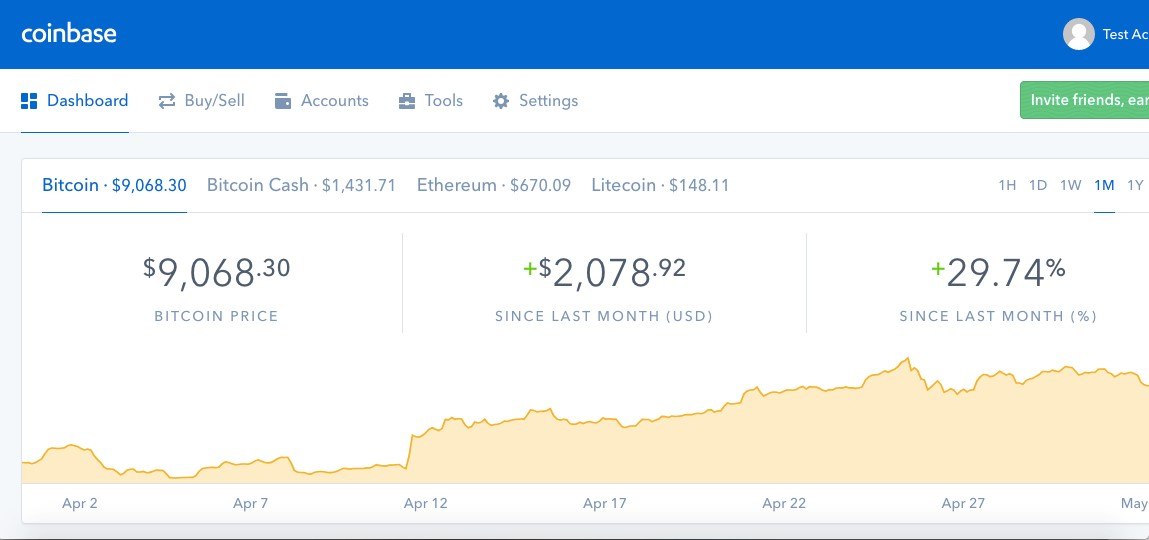
Buying Bitcoin on Binance

Buying Bitcoin on Binance
Binance is another popular place to buy Bitcoin. However, Binance is cryptocurrency only – that is, you can only purchase Bitcoin with other cryptocurrencies, such as Ethereum, Litecoin, and so on.
Binance is known for its huge selection of cryptocurrencies and is a user favorite when it comes to altcoin (cryptocurrencies that aren’t Bitcoin) exchanges.
The interface isn’t as simple as Coinbase’s and is more geared towards users that are familiar with trading platforms. Also, technically you can’t buy Bitcoin directly on Binance but you can sell other cryptos for Bitcoin.
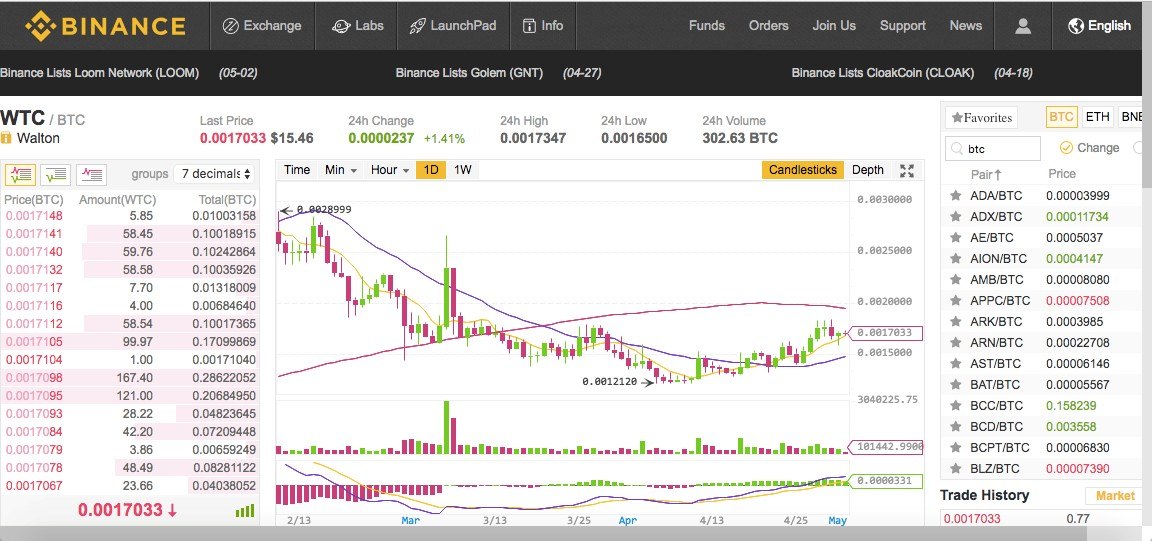
(For example, if you had some Walton, you could sell it for Bitcoin).
Buying Bitcoin on Changelly

(For example, if you had some Walton, you could sell it for Bitcoin).
Buying Bitcoin on Changelly
Changelly is another cryptocurrency exchange known for its ease of use. Users simply select the amount of cryptocurrency or fiat currency (e.g. USD or EUR) that they have and immediately get a quote for their Bitcoin purchase based on real-time exchange rates. Credit card is supported, too.
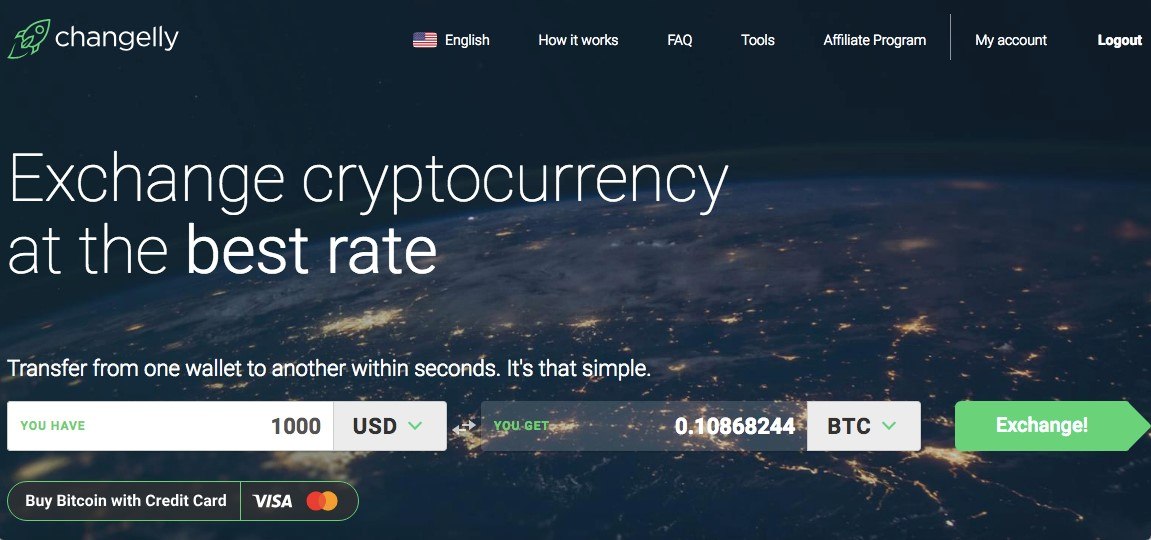
Buying Bitcoin on BitMEX

Buying Bitcoin on BitMEX
BitMEX is a cryptocurrency exchange that offers fast signups and requires no personal information. BitMEX might be favored more by advanced traders since it offers advanced options, such as 100x leverage.
There is no support for fiat currencies and Bitcoin trades have spot and futures trading options.
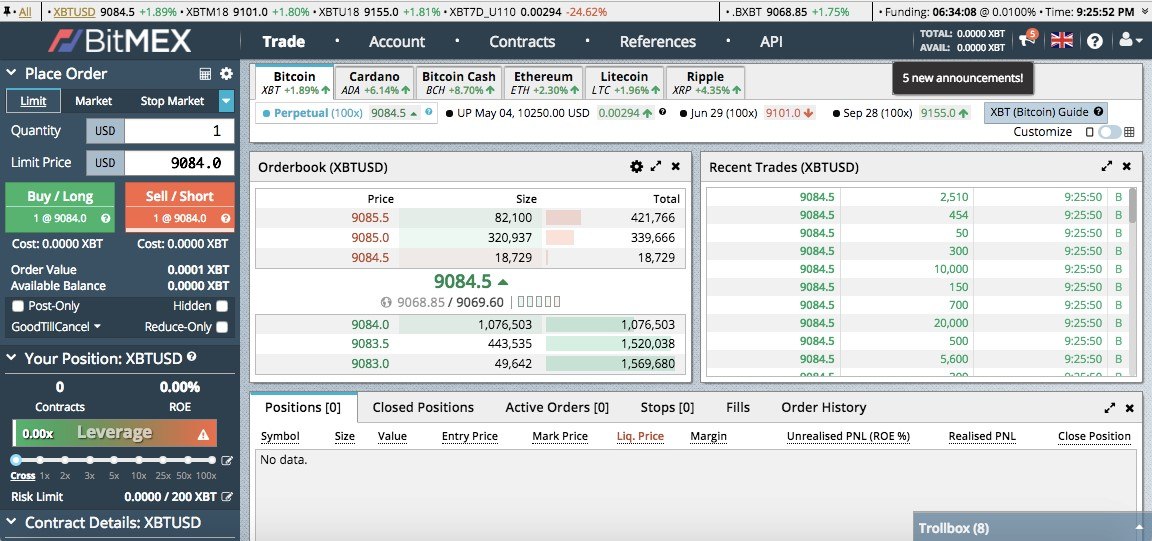
Buying Bitcoin on HitBTC
HitBTC is another place to buy Bitcoin. It offers high liquidity, low fees, no deposit or withdrawal limits, various cryptocurrency trading options, and more.
On HitBTC, users can buy Bitcoin using Tether (USDT) or sell other cryptocurrencies for Bitcoin.
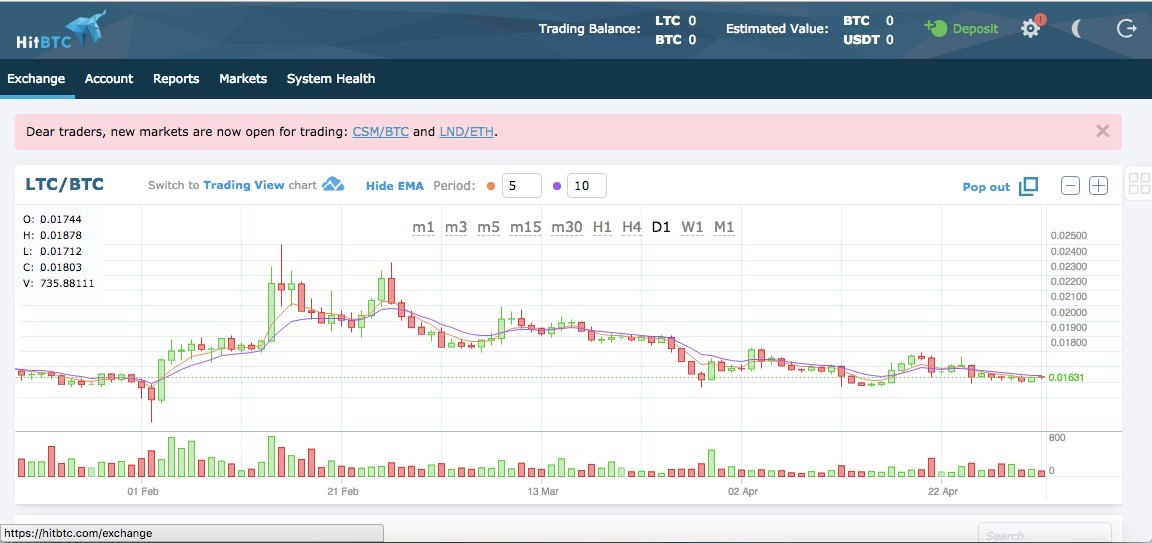

Buying Bitcoin on LocalBitcoins
LocalBitcoins is slightly different from the previous Bitcoin buying options because, instead of acting as a Bitcoin exchange, LocalBitcoins acts as a middleman between buyers and sellers of Bitcoin, making LocalBitcoins a peer-to-peer (p2p) exchange.
Users can choose from tons of Bitcoin buying methods. In the United States, payment methods like Moneygram, Paypal, Western Union, and even gift cards for Amazon and Ebay are popular.
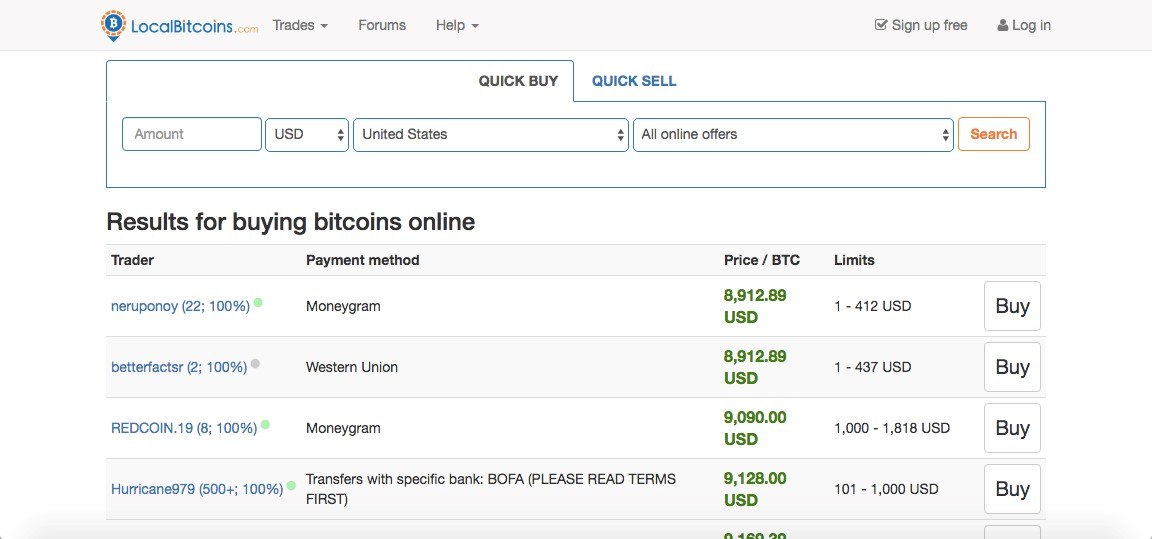
Withdrawing Bitcoin to a Wallet

Withdrawing Bitcoin to a Wallet
After purchasing Bitcoin on one of the aforementioned sites, you can withdraw your Bitcoin to a wallet for safekeeping (assuming you’re not going to immediately trade the Bitcoin on an exchange).
Each site will have a slightly different process but the gist is the same: you find the withdrawal option, enter your wallet’s Bitcoin address, and wait for your Bitcoin to be sent from the site to your wallet.
Tracking Bitcoin Trades – Cointracking
For users that make a lot of Bitcoin trades, it can be a hassle keeping track of all the trades for accounting and tax purposes. However, services, such as CoinTracking.info, analyze trades from different platforms and generate reports on profit and loss, coin value, realized and unrealized gains, potential taxes, and more.
Trading Charts – TradingView and Coinigy
For those that are looking for advanced charting and technical analysis options to analyze the market, TradingView and Coinigy are two popular platforms amongst Bitcoin traders. Both offer free and paid options.
TradingView is the most widely used by crypto traders. TradingView’s free plan gives users three indicators per chart and one indicator template. Users interested in a paid plan with more real-time data options, faster data flow, and no ads can opt for a free thirty-day trial.
Coinigy also offers a free option but paid subscribers can tap into data from 45 exchanges, use a mobile app for Android, receive SMS and email alerts, and use more than six dozen technical indicators.
After Buying Bitcoin
After buying Bitcoin, it’s up to you what you do with your newly bought cryptocurrency!
Many people opt to hold (“HODL” in the cryptocurrency community) and wait for the price of their digital asset to increase. Others choose to use Bitcoin to buy products and services. You could also send your Bitcoin to a friend or family member to help spread the word about Bitcoin.
Conclusion
Buying Bitcoin can definitely be overwhelming at first. However, with this guide, you’ll at least know the basics of picking the right Bitcoin wallet for storing your funds, using the most popular sites for buying Bitcoin, withdrawing purchased Bitcoin to a wallet, tracking your trades and the overall market, and things you can do with your newly obtained digital currency.
Related Articles
How to Buy Bitcoin
Introduction The process of buying Bitcoin can definitely be confusing if you’re new to cryptocurrency. With this guide, you’ll learn how to buy Bitcoin using some of the most popular Bitcoin buying options and exchanges, store your Bitcoin safely, ...How to Sell Bitcoin
Introduction Once you’ve bought some Bitcoin, it can be quite a process figuring out how to sell Bitcoin afterwards. In this guide, we’ll make selling Bitcoin a breeze and let you know how to sell your Bitcoin easily on some of the most popular ...How to Sell Bitcoin
Introduction Once you’ve bought some Bitcoin, it can be quite a process figuring out how to sell Bitcoin afterwards. In this guide, we’ll make selling Bitcoin a breeze and let you know how to sell your Bitcoin easily on some of the most popular ...Getting Started with Bitcoin Mining
What is Bitcoin mining? Bitcoin mining uses computing processing power to run SHA256 double round hash verification processes to validate Bitcoin transactions and provide the requisite security for the public ledger of the Bitcoin network. Computing ...Getting Started with Bitcoin Mining
What is Bitcoin mining? Bitcoin mining uses computing processing power to run SHA256 double round hash verification processes to validate Bitcoin transactions and provide the requisite security for the public ledger of the Bitcoin network. Computing ...